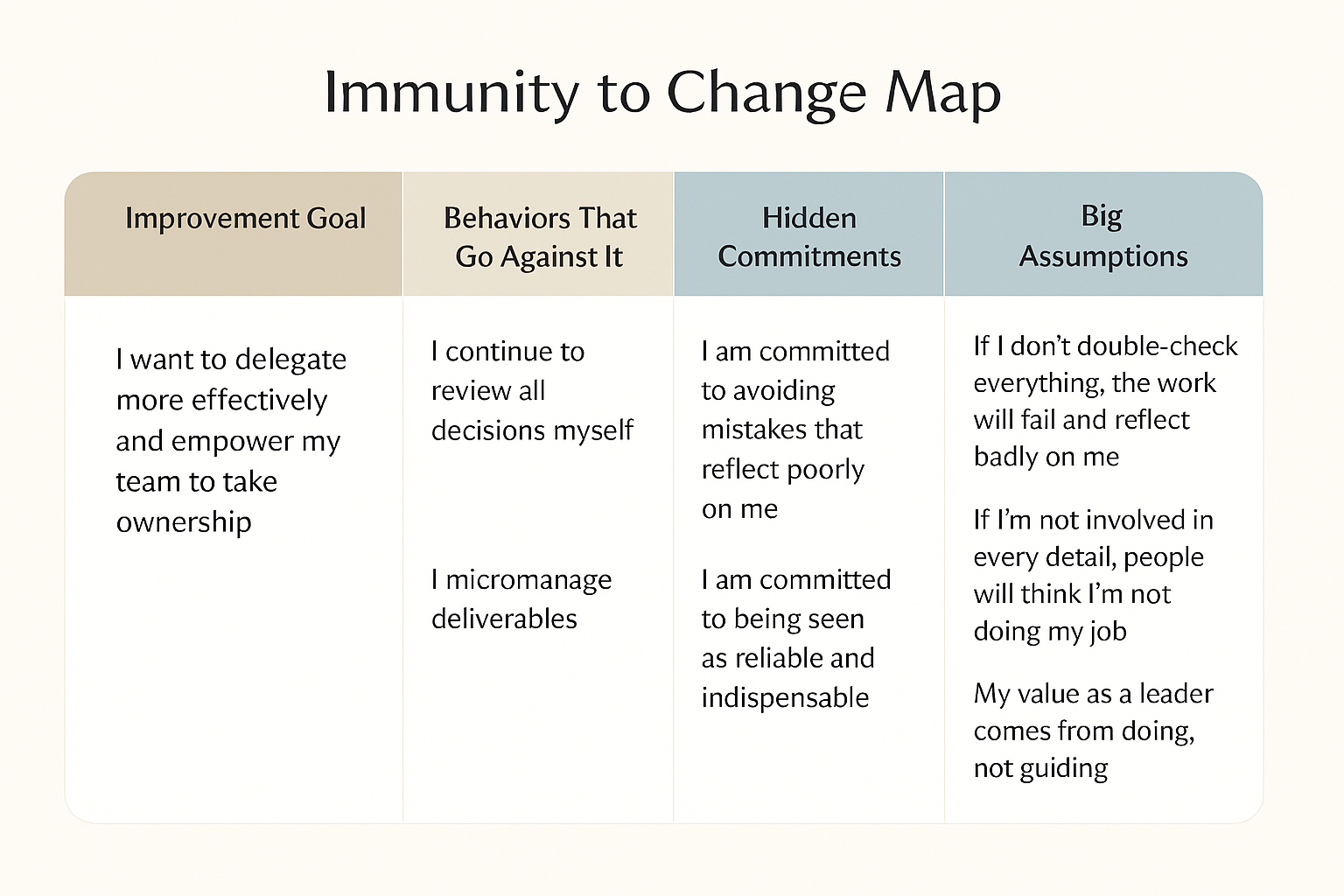The Cost of Comfort: Rethinking Leadership from the Inside Out
A reflection on leadership, fear, and self-awareness inspired by Immunity to Change, uncovering how our hidden commitments can hold us back from the values we claim to lead with.

From where I stand leadership is rarely about lack of vision, it’s often about the unseen forces that keep us from living into that vision.
Reading Immunity to Change helped me sit with this truth. The book doesn’t just ask you to lead better. It asks you to look inward, deeply. To name what’s been driving you beneath the surface. That’s what makes the learning uncomfortable, but transformational.
One insight that struck me was this: The fear of not having this type of awareness is the harm we produce as leaders—the dynamics we perpetuate, and the contradictions we create from our values to our actions. It’s not just about missing the mark. It’s about unintentionally undermining the very things we claim to stand for.
The book introduces an “X-Ray Map” that helps leaders uncover these contradictions. You start by naming your improvement goals. Then, you look at what you’re doing instead. From there, you explore the hidden commitments and deep-seated assumptions that may be working against you.

Take this example: a leader says they value diversity, inclusion, and social change. They mean it. However, their actions might tell a different story, characterized by clinging to perfectionism, reacting with urgency, making overly controlling decisions, or surrounding themselves with people who think just like them. Not because they don’t care. But because these behaviors feel safe. Comfortable. Familiar.

Sometimes, in the name of efficiency or ease, we build teams that mirror our own thinking, teams that operate the way we do, speak the way we do, and affirm our instincts. It gives us comfort. But that comfort can come at a cost. When we surround ourselves with people who challenge us less, we may unintentionally create cliques, reward sameness, and miss out on incredible talent. Our hiring practices, our circles of trust, even who we delegate to, all of it can become a reflection of our own unconscious fears. The desire to stay in control, to feel indispensable, and to avoid discomfort are things that don’t just limit personal growth. They can quietly shrink the possibilities of our work. If we’re not careful, we may end up leading in ways that protect our confidence but weaken our teams.
That’s the power of this work. It helps us understand how the fear of failure, loss of control, and feeling irrelevant can quietly run the show. It forces us to ask: What do we lose when we stay in the weeds? When we measure our value by how indispensable we are, rather than how empowered our team is?
This all reminded me of David’s story in the book, a man caught between his loyalty to blue-collar values and the demands of his new leadership role. His internal conflict was captured in one quote:
"I'll abandon my values of what it means to be a worker. I'm committed to being loyal to my blue-collar roots."
His old narrative had served him well, but now, it was holding him back. Leading meant letting go of doing and stepping into the vulnerability of guiding others.
That’s why Immunity to Change isn’t about technical tweaks. It’s about adaptive leadership—learning to see and respond to the messy, emotional, human parts of change. The book doesn’t offer a quick fix. It offers a mirror.
As a mother and leader, I’ve felt these same tensions. Even with all the self-work I’ve done, therapy, reflection, and intentional practices, I still find myself reacting from old patterns when I’m depleted. That’s what makes this book feel so real. It speaks to the part of us that wants to grow, but also wants to feel safe.
So maybe that’s where reflective leadership begins, not with strategy, but with courage.
The courage to ask:
“What am I doing that might be getting in the way of what I say I care about?”
And more importantly:
“Am I willing to sit with what I find—and work through it?”
Because change isn’t just about knowing better, it’s about uncovering the hidden commitments that keep us from doing better. As leaders, parents, friends, and partners, we all carry assumptions that shape how we show up. Immunity to Change reminds us that growth doesn’t begin with action; it begins with awareness.




